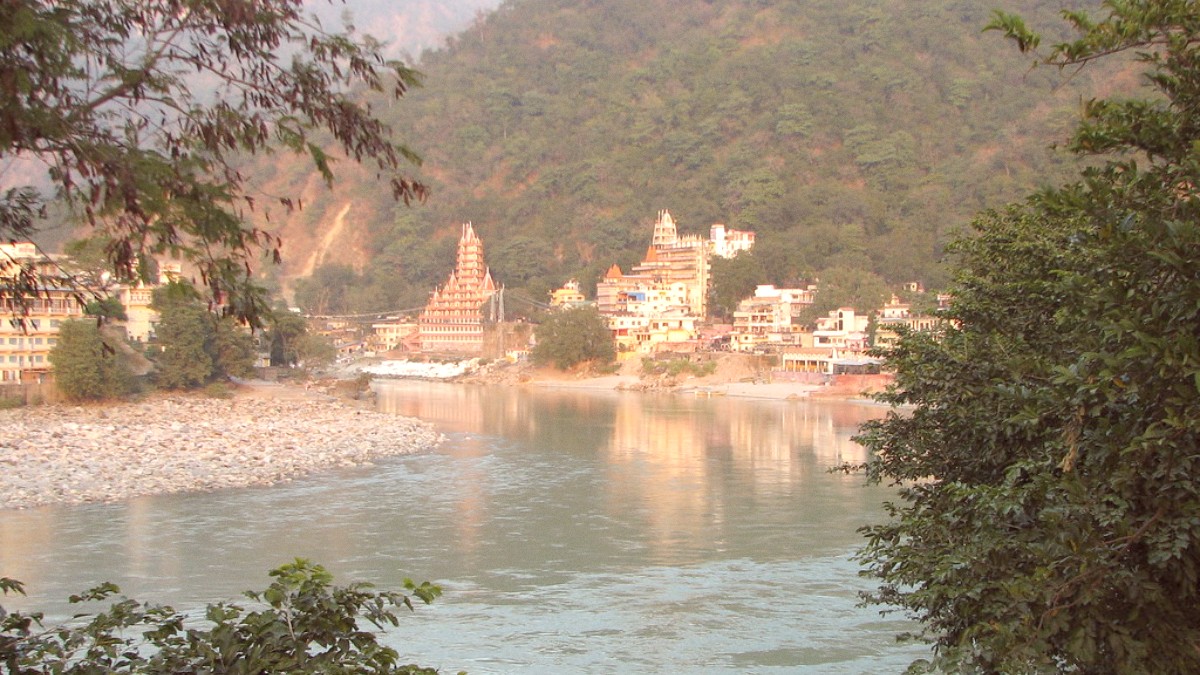
Uttarakhand Uttaranchal, India
Spring (March to April) brings pleasant, mild weather, with temperatures from 15°C (59°F) to 30°C (86°F). Days are sunny, evenings cool. This period is popular for outdoor activities and spiritual practices, as the climate is comfortable. Precipitation is low, and humidity stays at a comfortable level.
Summer (May to June) in Rishikesh is hot. Temperatures usually range from 25°C (77°F) to 40°C (104°F), often rising higher during the day. The sun is intense. Humidity begins to rise towards June, making the air feel heavier. Midday heat can be oppressive, so many people limit outdoor activity to early mornings or late afternoons.
Rishikesh's location in the Himalayan foothills brings specific weather patterns. Monsoons from July to September lead to heavy rainfall. This causes swollen rivers, flash floods, and landslides, notably on winding roads. River rafting is typically suspended for safety. Always check local weather and road conditions during monsoon.
Summer months can be very hot, especially May to mid-July. Stay hydrated by drinking plenty of water and avoid strenuous activity during midday sun. Winters, especially January, can be chilly. Pack warm clothing for evenings and early mornings, when temperatures drop considerably.
Heavy Rain, High Humidity
Very few tourists, lowest accommodation prices, lush green scenery.
Outdoor activities limited, rafting closed, risk of travel disruptions.
Fewer Crowds
Lower accommodation prices, September offers lush green views and rafting begins.
Hot in May-June, monsoon in July-September. Bookings needed for popular programs.
Best Weather
Excellent weather for all activities, clear skies, comfortable temperatures.
Higher accommodation prices, more crowded, early booking for ashrams.
October to April is the most comfortable climate for extended stays and courses. The pleasant temperatures allow for outdoor practice and comfortable ashram living.
The period from mid-September to May is best for river rafting. Rafting is typically suspended during the monsoon (July-September) when river levels are too high.
October to April offers ideal conditions. November and March are notably good for clear views.
Experience this ceremony any time of year. Pleasant weather (Oct-Apr) makes evening rituals more enjoyable.
Slippery trails and leeches are common during monsoon months.
Mid-September marks the start of the rafting season after the monsoon recedes.
The International Yoga Festival, a major event, takes place in March, drawing many visitors.
Most foreign nationals need a visa to enter India. The most common option for tourists is the e-Visa.
This electronic visa is for tourism, business, and medical purposes. Citizens of over 150 countries are eligible. Apply for the e-Visa entirely online through the official Indian e-Visa website. The process usually takes 24-72 hours.
If your nationality does not qualify for an e-Visa, or if you need a visa type not covered by the e-Visa (e.g., long-term student visa), you must apply for a regular sticker visa.
India does not charge a general entry fee beyond the visa application fee. Upon arrival at designated international airports (Delhi is a common entry point for Rishikesh visitors), proceed to immigration.
Rishikesh options cater to various budgets, from frugal backpacking to luxurious stays. The official currency of India is the Indian Rupee (INR / ₹).
Banknotes are available in denominations of ₹10, ₹20, ₹50, ₹100, ₹200, ₹500, and ₹2000. Coins are available in ₹1, ₹2, ₹5, and ₹10. Familiarize yourself with the appearance of genuine Indian currency notes.
ATMs are widely available in Rishikesh, especially in main market areas and near the bridges. This is often the most convenient way to obtain local currency. Inform your bank before travel to avoid card suspension.
Aims for economical travel. Prioritizes hostels, street food, and shared transportation.
Accommodation: ₹400-₹800 (hostel dorm/basic guesthouse).
Daily Estimate: ₹1,500 - ₹2,500 (~$18 - $30 USD).
Seeks comfort and convenience. Comfortable guesthouses, diverse restaurant meals.
Accommodation: ₹1,500-₹3,000 (comfortable hotel/guesthouse).
Daily Estimate: ₹3,500 - ₹6,000 (~$42 - $72 USD).
Focus on high-end experiences. Boutique hotels, fine dining, private transportation.
Accommodation: ₹5,000+ (boutique hotel/luxury resort).
Daily Estimate: ₹8,000+ (~$96+ USD).
| Item | Estimated Price Range (INR) | Notes |
|---|---|---|
| Hostel Dorm Bed | ₹400 - ₹800 | Per night, basic breakfast often included. |
| Local Thali/Meal at Dhaba | ₹150 - ₹300 | Complete, hearty Indian vegetarian meal. |
| River Rafting (short course) | ₹600 - ₹1,500 per person | Prices vary by section length and operator. |